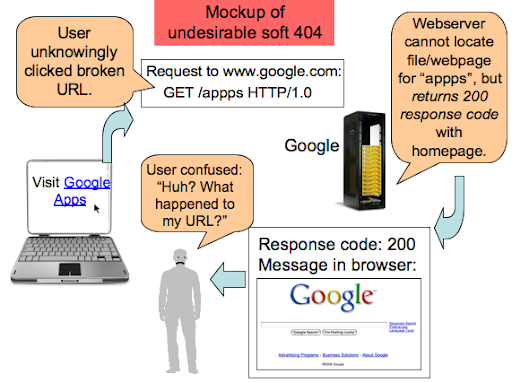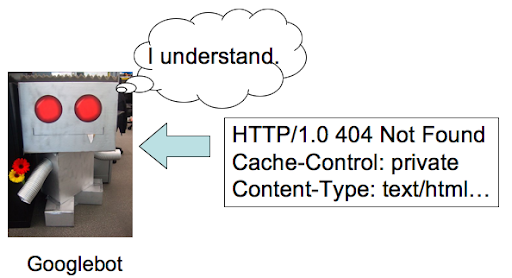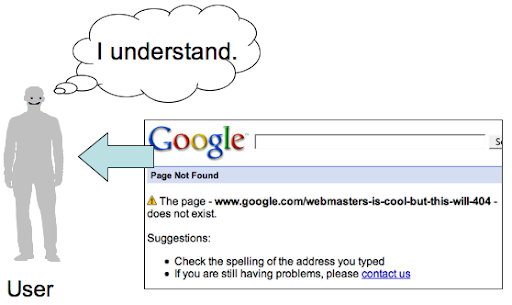Tuesday, August 12, 2008
We see two kinds of
404 ("File not found") responses
on the web: "hard 404 error" and "soft 404 error." We discourage the use
of so-called soft 404 because they can be a confusing experience for users and search
engines. Instead of returning a 404 response code for a non-existent URL, websites
that serve soft 404 errors return a 200 response code. The
content of the 200 response is often the home page of the site, or an error page.
How does a soft 404 look to the user? Here's a mockup of a soft 404:
This site returns a 200 response code and the site's home page for URLs that don't
exist.

As exemplified above, soft 404 errors are confusing for users, and furthermore search
engines may spend much of their time crawling and indexing non-existent, often duplicative URLs
on your site. This can negatively impact your site's crawl coverage—because of the time Googlebot
spends on non-existent pages, your unique URLs may not be discovered as quickly or visited as
frequently.
What should you do instead of returning a soft 404?
It's much better to return a 404 response code and clearly explain to users that
the file wasn't found. This makes search engines and many users happy.


Can your webserver return 404, but send a helpful "Not found" message to the user? Of
course! More info as
"404 week"
continues!
